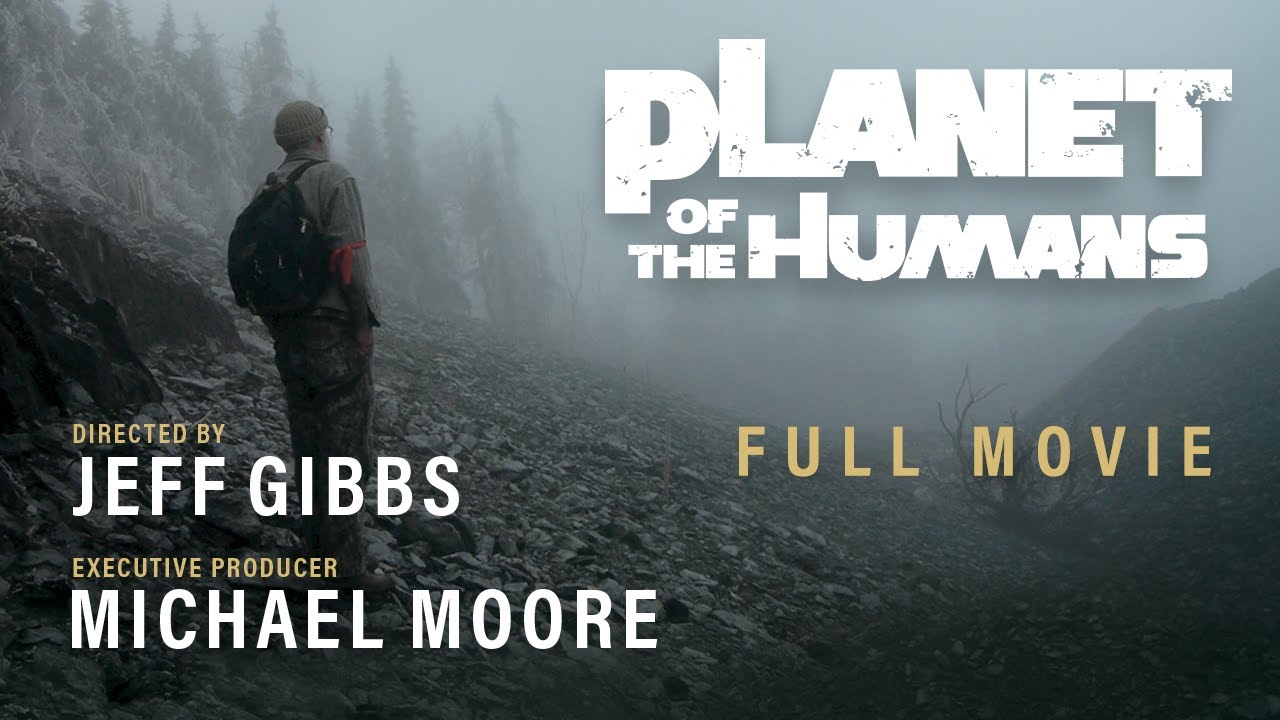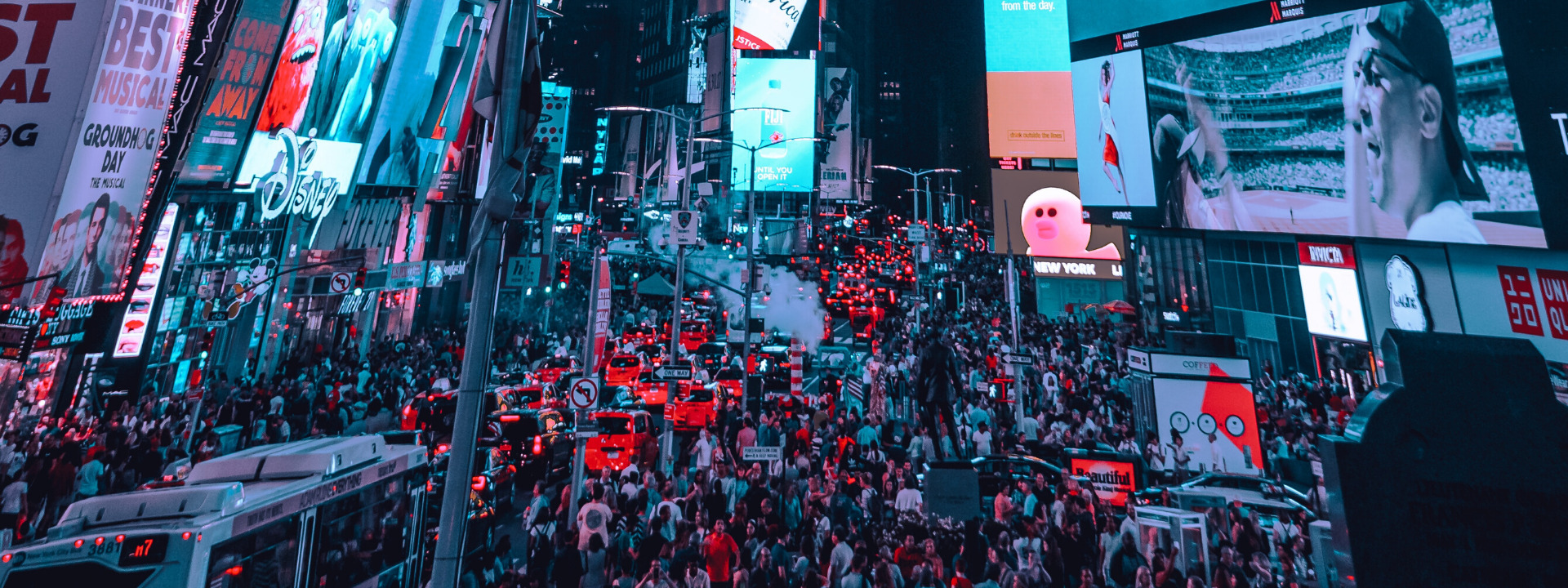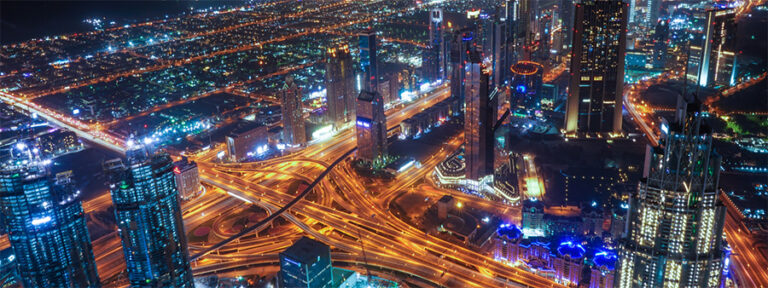Our Director Robin Maynard reviews Planet of the Humans, the controversial new documentary produced by Michael Moore and directed by Jeff Gibbs, released on the 50th anniversary of Earth Day.

Planet of the Humans focusses primarily, and controversially, on exposing what Gibbs believes is the ‘delusion’ of the renewables revolution; unpicking the ‘clean green promise’ of solar power, wind and especially biomass to reveal the underlying dirty truth: that these shiny tech-fixes do not come without cost and are often co-opted by industrialists to greenwash their destructive push for continuous growth. But the film’s most important takeaway message is that infinite growth, even green growth, can never be sustainable on a finite planet.
Gibbs asks early on in the film, “Is it possible for machines made by industrial civilisation to save us from industrial civilisation?” By the end, the viewer is in no doubt that the answer is an emphatic ‘No’. But the alleged delusion is a lot worse than mere co-option of and profiteering from the ‘green revolution’ by the oil and gas giants and their associates. The film controversially suggests that some green organisations in the US have also been co-opted, or are complicit, in promoting the delusion. The fact that the film openly fingers some high-profile US conservation organisations and leading gurus in the US and global climate change movement as being culpable, suggests the filmmakers feel their case is strong enough at least to have got out of the edit suite and risk the law suits.
Questioning the alternatives
Wind turbines and solar panels are the ‘poster boys and girls’ of the renewable movement. What’s not to love about those mesmerising blades swooshing high above one’s head harvesting the wind or minimalist photovoltaic cells alchemically converting sunshine into electricity? According to Gibbs’ accusations, the sources and means of their production for a start: quartz blasted from the earth as damagingly as any other mining operation, then fused with coal in furnaces emitting mega tonnes of CO2; cobalt dug by child-labour in the poorest countries.
The film’s harshest spotlight falls on a form of renewable energy, which has to-date had less publicity, but makes up the greatest proportion of current global take-up, biomass. Biomass plants have proliferated across the US in particular, with companies and investors exploiting federal and state grants. Biomass means burning trees – clear-cut and chipped trees. But in the US biomass plants also burn natural gas, old tyres and discarded creosote-soaked railway sleepers to achieve the temperatures necessary to get wet timber to combust. This is not just a US ‘dirty big secret’, as wood-chip from the US, Canada, and Brazil is imported into the UK and Europe to fuel biomass plants here.
“Too much, too fast”
The most depressing sequence in the film is when Gibbs seeks to press a slew of leading US and global environmental leaders attending a climate rally in Washington on their views of the impacts of biomass. All, at least as Gibbs has edited their responses, appear to prevaricate or duck the question bar one: Vandana Shiva, the Indian environmental activist, “This is just about the same old companies maintaining themselves through use of another raw material, the green planet.” Phew, I breathed a sigh of relief – as some years ago I’d travelled with Vandana up into the foothills of the Himalayas to meet the Chipko women, for whom the term ‘tree-hugger’ was truly a badge of courage not a lazy insult. The women had put themselves in harm’s way to protect their tribal forests and watersheds from the chainsaws and bulldozers of the loggers and dam-builders. Up until that point, I was close to being overwhelmed by the depressing, dystopian reality the film was forcing on me, with the people and technologies that I’d accepted over the years as champions and in the vanguard of a dawning post fossil-fuel age, apparently shown up as charlatans, counterfeits and frauds. Thankfully, other perspectives, like Vandana’s are aired, along with a deeper analysis of the challenges facing us as all as human civilisation seeks to de-carbonise: “Humans are experiencing the planet’s limits all at once.” Gibbs finds a common-thread amongst those other voices, “Though each of them takes climate change seriously, every expert I talked to wanted to bring my attention to the same underlying problem: there are too many human beings, using too much, too fast.“
Whilst the film’s criticism of biomass is entirely justified, it goes too far in painting all renewable energy sources and their proponents with the same oil-drenched brush. Some of the facts and figures used to bash solar and wind are a decade out of date and deeply misleading. Sure, no energy source is impact-free but recent advances in efficiency and storage capacity have made wind and solar far more sustainable than any fossil fuel. Gibbs’ indiscriminate denigration of renewable energy threatens to give power to fossil fuel proponents and enemies of the energy transition. Certainly, the film is disturbing when it comes to taking the shine off some technologies, organisations and individuals in the climate movement. But it’s too simplistic not to expect a compromised, carbon-contaminated transition as we wean ourselves off fossil-fuels and scale-up greener, cleaner technologies. And naïve not to expect ‘the good, the bad and the downright ugly’ to follow the money!
“Gibbs’ indiscriminate denigration of renewable energy threatens to give power to fossil fuel proponents and enemies of the energy transition.”
However, the film gets one key message absolutely right: even with renewable energy, “infinite growth on a finite planet is suicide“. A hard truth that many within the environmental movement still deny. Planet of the Humans ends with the awfully familiar images of orang-utans clinging to lone trees amidst Malaysian or Indonesian tropical forest cleared for palm oil plantations, scrambling exhausted through wrecked former peat swamp-forest, whilst Gibbs intones darkly, “We must at long last accept that it’s not the carbon dioxide molecule that’s destroying the planet – it’s us”. Cue: fade to setting Sun on dying Earth.
Planet of the Humans fails viewers in not offering any hope, given the real opportunity and time (just) to adopt the available, proven low-tech solutions for indeed “getting ourselves under control” – which would also help get climate change under control. In particular, women’s empowerment, education, and universal access to contraception and the choice to use it.
‘No-regrets’ solutions
The UN projections for our human population on planet Earth by 2100 range from a low of 7.3 billion to a high of over 16 billion; that huge difference predicated on whether the number of children per woman globally goes up or down by a very small factor of half a child more or less (1 more or 1 fewer child every second family). Where women have the access, information, rights and means to do so, they invariably choose smaller families. Almost half of all pregnancies globally are unintended and over 230 million women in developing countries who do not wish to become pregnant are not using any modern contraception.
“Taking the readily available choice to have a smaller family ranks as one of the most impactful eco-actions.”
We know from the excellent work done by Project Drawdown that delivering on that unmet need offers a ‘no-regrets’ solution, affording millions of young women their basic human rights, whilst also cutting more carbon dioxide annually than all onshore and offshore windpower combined. Hence Project Drawdown ranks those two inter-related actions at number two in their top 10 solutions for curbing climate change. For those of us, living in the most industrialised countries, with the highest per capita rates of consumption, taking that readily available choice to have a smaller family ranks as one of the most impactful eco-actions. In its unhelpful ‘all hope is lost’ conclusion, the film missed a key opportunity to emphasise the urgent need for pushing hard on both more sustainable consumption behaviour and smaller families. Of course, the cynical ‘truth’ and ultimate challenge exposed by the film is that whilst that opportunity and those solutions may be obvious and available, under the current economic growth paradigm, there’s no short-term profit in investing in them…


